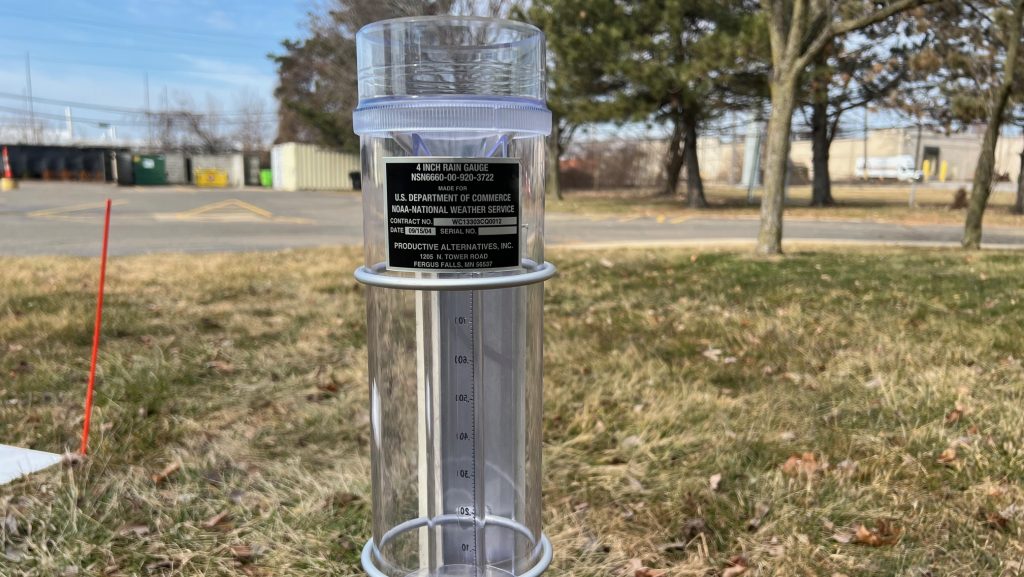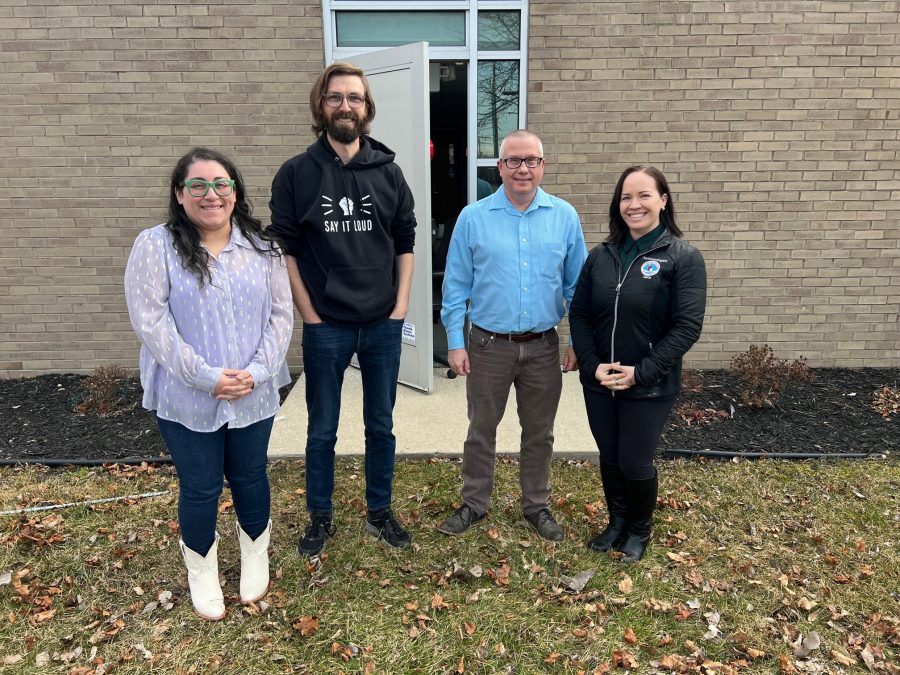Observers track rain data on Detroit’s flood-prone east side
The data they collect will give forecasters a better understanding of how weather affects a part of the city that’s vulnerable to flooding and climate change.

Rain gauges like this one can improve data collection.
The National Weather Service has a new cooperative observation station on Detroit’s east side. Volunteers measure rain and snow at the Eastside Community Network‘s office on Conner Street. The data they collect will give forecasters a better understanding of how weather affects a part of the city that’s vulnerable to flooding and climate change.
Meteorologist Sara Schultz oversees the NWS cooperative observation program for southeast Michigan.
“We have over 50 volunteers that take the precipitation and temperatures for us,” she says, referring to the number of observers throughout the region.
Schultz installed a rain gauge behind ECN as well as a small white board to measure snowfall. Marie Garcia uses a stick to take snow readings.
“And then I clear this off every day after measuring the snow,” she said. “I just kind of pick several different spaces.”
Detroit’s rain data is scarce
Garcia is a post-doctorate fellow at Wayne State University’s civil engineering unit. She’s working with local, state and federal agencies on a watershed management plan for Detroit’s east side. This area is prone to flooding when it rains, partly due to aging water infrastructure, but also the industrial landscape around it. The Stellantis Mack Avenue Assembly plant is right next door to the Eastside Community Network. With few green spaces to absorb rainfall, heavy downpours can rapidly overwhelm sewers and storm drains, flooding basements. Dr. Garcia says having real-time rain data will improve watershed management.
Read more: Jefferson Chalmers residents work to reduce flooding damage from climate change
“We’ll know what size of storms different parts of the city experience more often, and what types of storms we need to plan for as far as finding a space for the water to go that’s not the sewer system,” she says.
Getting accurate rainfall and snow data in Detroit is difficult because it’s such a large city, and the National Weather Service doesn’t have volunteer observers in every corner. NWS does record data at Coleman A. Young Municipal Airport, but that system is automated.
Meteorologist Steve Considine says this new in-person effort will help fill those data gaps.
“And through this site here, we’re hoping to encourage more volunteers within the city to help us get at least rainfall reports,” he says.
Climate change disproportionately affects communities of color
Considine’s job is to help communities that suffer the worst impacts of bad weather but lack the resources to recover from it. That includes places with lower incomes, limited internet access, or large numbers of non-English speakers. As more extreme weather slams urban communities, Considine says informing the people who live in them becomes more urgent.

“Our goal not only is to make sure that we do the best job at providing warnings and a heads-up to this high impact weather, but we also have to make sure that the communities are as prepared as possible for this,” he said.
Toward that end, Considine works with local nonprofits such as the Eastside Community Network. Ricky Ackerman is ECN’s chief sustainability office and a volunteer weather observer. For him, the key issue is climate equity — looking at how climate change affects at-risk communities and ensuring people get what they need to protect themselves from it.
“Air pollution is a big one,” he says. “We have the Stellantis factory right next door, and a lot of people are smelling it, they’re experiencing it, and especially on hot days, that can be a really big problem.”
Read more: Urban farm tracking pollution from nearby Stellantis plant
Ackerman says ECN offers the community refuge from climate-related problems.
“We decided to turn this into a resilience hub,” he said. When there is extreme flooding, extreme heat, or power outages, ECN offers a space for people to gather.
“It’s a community space, somewhere they feel comfortable, connected,” Ackerman said.
ECN spreads the word
ECN is using those connections to distribute 10 more rain gauges across the east side. Besides the precipitation data he and other volunteers gather now, they’ll soon be able to record temperatures, too. Meteorologist Steve Considine says he expects to see numbers that are warmer than the official temperature readings at City Airport.
“Most people don’t live at the airport, they live in more the urban environments,” he said. “So, it might give us a little bit better idea of what the temperature is in the more urbanized areas of Detroit.”
Considine says all the data from the Eastside Community Network observers will become part of a long-term climate analysis of the entire city. And that information could go a long way toward helping at-risk communities survive extreme weather.
Trusted, accurate, up-to-date.
WDET strives to make our journalism accessible to everyone. As a public media institution, we maintain our journalistic integrity through independent support from readers like you. If you value WDET as your source of news, music and conversation, please make a gift today.
